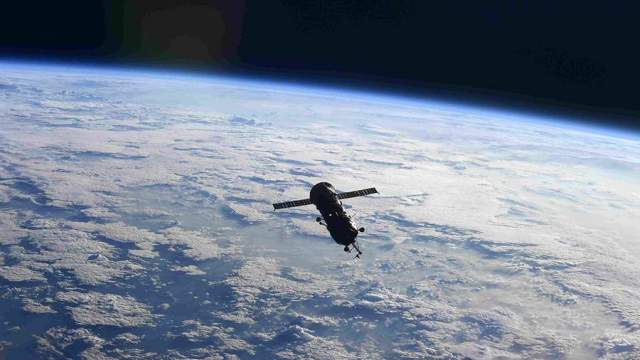The Scientific and Production Association (NPO) of Mechanical Engineering, part of the Tactical Missile Armament Corporation, has developed a new method for cleaning orbits from space debris using a modular complex. This is stated in the materials of the Federal Institute of Industrial Property.
The patent notes that the invention relates to space technology and can be used to reduce spacecraft from orbit, inspection, control them in orbit, including geostationary (a circular orbit above the equator, along which the device moves with an angular velocity equal to the angular velocity of the Earth. - Ed.), as well as for other tasks "requiring contact interaction with the spacecraft".
It is assumed that a modular spacecraft consisting of a base unit and autonomous maneuvering modules, which are separated from the base in advance, will be put into orbit. Target designation can be carried out both from the base unit and from a separate satellite. After transmitting data to the autonomous maneuvering module, it changes its orbit, approaches the spacecraft for physical contact and information from orbit.
"In the event of a failure of the base unit of a modular spacecraft, the ideology of building the complex provides the possibility of either entering another device into the group instead of the failed one, < ... > or transmitting target designation to each module by space means located at close altitude or coplanar orbits that are not part of the complex," the document quotes TASS.
The invention is designed to increase the reliability of operation and increase the possibilities of cleaning space from anthropogenic debris.
In May, the head of the information and analytical center of TsNIIMash JSC, Igor Bakaras, said that there are about 7 thousand tons of space debris and 3 thousand tons of operating spacecraft, including the International Space Station, in near-Earth orbits. According to him, space debris means all artificial objects and their fragments in space that have failed and can no longer be used. At the same time, this garbage has a dangerous effect on working spacecraft, the expert added.
In turn, the leading researcher of the ICI RAS, Nathan Eismont, said in the same month that there are about 15 thousand objects in near-Earth space, the dimensions of which exceed 10 cm. They pose the greatest danger to satellites and other useful space objects, and this risk is increasing every day.
He added that evasion maneuvers are carried out on the ISS several times a year, and stressed that there is not yet a sufficiently effective way to get rid of space debris.

